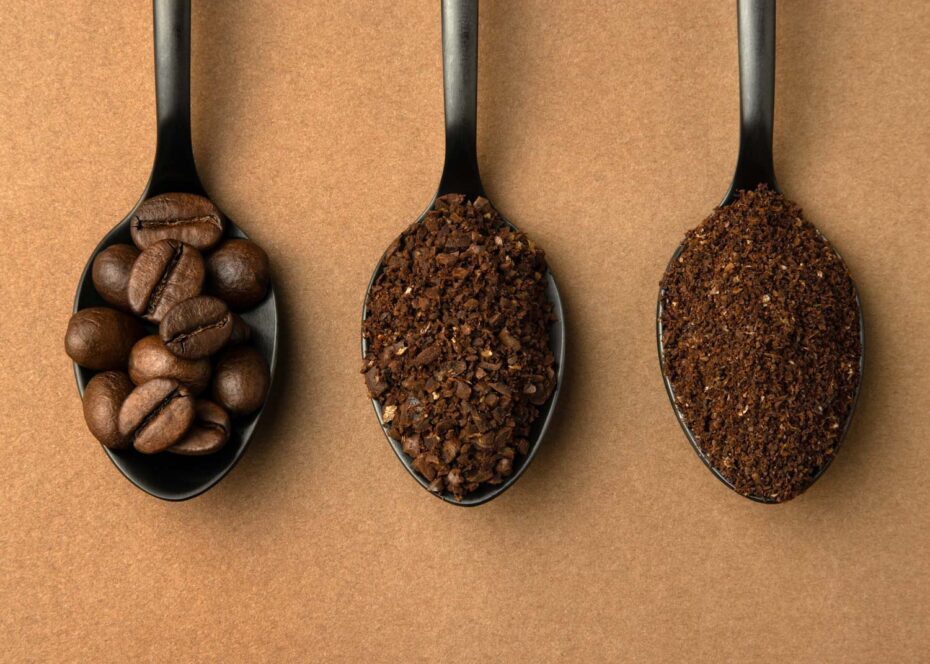
Brewing Perfection: Unveiling the Ideal Coffee Ground Amount for 10 Cups
The aroma of freshly brewed coffee, a morning ritual for millions, signifies the start of a productive day or a welcome break. But achieving that perfect cup, or in this case, ten perfect cups, often hinges on a crucial factor: the precise amount of coffee grounds. This article dives deep into the science and art of coffee brewing, specifically addressing the question: 10 cups of coffee – how much coffee ground is truly needed to unlock the full potential of your beans? We’ll explore the variables, the techniques, and the subtle nuances that separate a good brew from an exceptional one.
Understanding the Coffee Brewing Ratio
At the heart of consistently great coffee lies the brewing ratio. This ratio, expressed as the amount of coffee grounds per unit of water, is the fundamental building block for flavor extraction. While personal preferences vary, a widely accepted starting point is the Golden Ratio, often cited as 1:15 or 1:17 (coffee to water). This means, for every gram of coffee grounds, you would use 15 or 17 grams of water. However, this is a general guideline, and the ideal ratio can fluctuate based on several factors.
When determining the correct amount of coffee grounds for 10 cups of coffee, you must first determine the size of your cups. Standard cup sizes vary, but a common measurement is 6 ounces (177 ml). However, many people use larger mugs. For the sake of this example, we’ll use a standard 6-ounce cup as a base, but remember to adjust the calculations based on your preferred cup size.
Calculating the Coffee Grounds: A Step-by-Step Guide
Let’s break down the calculation for 10 cups of coffee, using the 6-ounce cup size and a 1:15 ratio.
- Calculate Total Water Volume: 10 cups x 6 ounces/cup = 60 ounces. Convert ounces to milliliters (ml): 60 ounces x 29.57 ml/ounce ≈ 1774 ml.
- Convert Milliliters to Grams: Since water’s density is approximately 1 gram per milliliter, 1774 ml of water weighs approximately 1774 grams.
- Apply the Brewing Ratio: Using a 1:15 ratio, divide the water weight by 15: 1774 grams / 15 ≈ 118.3 grams of coffee grounds.
Therefore, to brew 10 cups of coffee (6-ounce cups) using a 1:15 ratio, you would need approximately 118.3 grams of coffee grounds. If you prefer a stronger brew, you can increase the amount of coffee grounds, perhaps using a 1:14 or even 1:13 ratio. Conversely, for a milder cup, use a 1:16 or 1:17 ratio. These are just starting points; experimentation is key to finding your perfect brew.
Factors Influencing Coffee Ground Amount
Several factors beyond the brewing ratio influence the ideal amount of coffee grounds for 10 cups of coffee. Understanding these factors will help you fine-tune your brewing process and achieve consistent results.
- Coffee Bean Type: Different coffee bean origins, roasts, and varieties have varying densities and flavor profiles. Lighter roasts generally require a slightly finer grind and may need a bit more coffee grounds compared to darker roasts.
- Grind Size: The grind size dramatically affects extraction. A coarser grind is suitable for French press, while a finer grind is needed for espresso. The brewing method dictates the grind size, which in turn affects the amount of grounds needed. A finer grind will often require a slightly smaller quantity of grounds for the same volume of water.
- Brewing Method: Different brewing methods, such as drip coffee makers, French presses, pour-over, and espresso machines, have different extraction efficiencies. A French press, for example, may require a slightly higher coffee-to-water ratio compared to a drip coffee maker.
- Water Quality: The mineral content of your water can influence the taste of your coffee. Using filtered water is always recommended, as it removes impurities that can detract from the flavor.
- Personal Preference: Ultimately, the best amount of coffee grounds is the one that tastes best to you. Experiment with different ratios and brewing techniques to find your ideal cup.
Coffee Ground Measurement: Weighing vs. Scooping
Accuracy is paramount when brewing coffee. While using a coffee scoop might seem convenient, it’s not as precise as weighing your coffee grounds. A scoop can vary in the amount of coffee it holds due to variations in grind size, bean density, and how tightly the grounds are packed. Therefore, using a digital kitchen scale is highly recommended for consistent and accurate results, especially when brewing 10 cups of coffee. This will ensure your ratios are spot-on, and your coffee tastes consistent from batch to batch.
Brewing Techniques for 10 Cups
Brewing 10 cups of coffee often involves using a drip coffee maker or a larger pour-over system. Here’s a quick overview of both methods.
Drip Coffee Maker
Drip coffee makers are the most common method for brewing large quantities of coffee. After calculating the correct amount of coffee grounds, simply add the grounds to the filter basket and pour the corresponding amount of water into the reservoir. Ensure the coffee maker is clean, and that you’re using a quality filter. The brewing time is usually automated, making the process simple and efficient. A drip coffee maker is ideally suited for brewing 10 cups of coffee.
Pour-Over
Pour-over methods offer more control over the brewing process, allowing for greater precision. For 10 cups of coffee, you’ll need a larger pour-over device, such as a Hario V60 or a similar setup designed for multiple servings. Carefully weigh and grind your coffee. Pre-wet the filter with hot water to remove any paper taste. Then, slowly pour the hot water over the grounds, ensuring even saturation. The pour-over method allows for nuanced control over the brewing process, which can lead to a superior cup of coffee. This method can take more time than using a drip coffee maker, but it is worth the wait for some coffee aficionados.
Grind Size and its Impact
The grind size of your coffee plays a critical role in extraction. When brewing 10 cups of coffee, it’s particularly important to use the appropriate grind size for your chosen brewing method. Using the wrong grind can lead to under-extraction (sour taste) or over-extraction (bitter taste).
- Coarse Grind: Suitable for French presses and cold brew.
- Medium Grind: Ideal for drip coffee makers and some pour-over methods.
- Fine Grind: Used for espresso and some pour-over methods.
For a drip coffee maker, a medium grind is typically recommended. For a pour-over, you can experiment with medium or slightly finer grinds, depending on the specific brewer and your taste preferences. [See also: Coffee Grinding Guide for the Perfect Brew]
Water Temperature and its Role
Water temperature is another key factor in coffee brewing. The ideal brewing temperature is generally between 195-205°F (90-96°C). Water that is too cold will not extract the flavors properly, resulting in a weak and sour taste. Water that is too hot can scorch the grounds, leading to a bitter taste. When brewing 10 cups of coffee, make sure your water heater is set to the correct temperature, or use a thermometer to monitor the water temperature in your pour-over process.
Troubleshooting Common Brewing Issues
Even with careful calculations and precise measurements, brewing coffee can sometimes present challenges. Here are some common issues and how to address them:
- Sour Coffee: This often indicates under-extraction. Try using a finer grind, increasing the brewing time, or slightly increasing the coffee-to-water ratio.
- Bitter Coffee: This suggests over-extraction. Try using a coarser grind, decreasing the brewing time, or slightly decreasing the coffee-to-water ratio.
- Weak Coffee: This may result from using too little coffee grounds or an incorrect water temperature. Ensure you’re using the correct amount of coffee grounds for 10 cups of coffee, and that your water is at the optimal temperature.
- Muddy Coffee: This usually indicates a grind that is too fine or a filter that is not properly seated. Use the correct grind size for your brewing method, and make sure your filter is properly positioned.
The Importance of Freshness
The freshness of your coffee beans significantly impacts the final flavor. Coffee beans begin to lose their aroma and flavor shortly after roasting. For the best results, purchase whole bean coffee and grind it just before brewing. When brewing 10 cups of coffee, be sure you are using fresh beans. Properly store your coffee beans in an airtight container, away from light, heat, and moisture, to preserve their freshness. [See also: How to Store Coffee Beans to Maximize Freshness]
Experimentation and Personalization
Ultimately, the perfect amount of coffee grounds for 10 cups of coffee is a matter of personal preference. Experiment with different ratios, grind sizes, brewing methods, and bean types to discover your ideal brew. Keep detailed notes of your experiments, including the amount of coffee grounds, the grind size, the water temperature, the brewing time, and your overall impression of the coffee. This will help you refine your brewing process and consistently achieve the perfect cup.
Brewing 10 cups of coffee can be a delightful experience, especially when you have the right measurements and techniques. From understanding the brewing ratio to choosing the right grind size and water temperature, every detail contributes to the final flavor. By following these guidelines and experimenting with your preferences, you can master the art of coffee brewing and enjoy a consistently great cup, every time.
So, the next time you’re preparing for a gathering or a busy morning, remember the importance of the coffee ground amount when brewing 10 cups of coffee. It’s the key to unlocking a rich, flavorful, and satisfying coffee experience.

